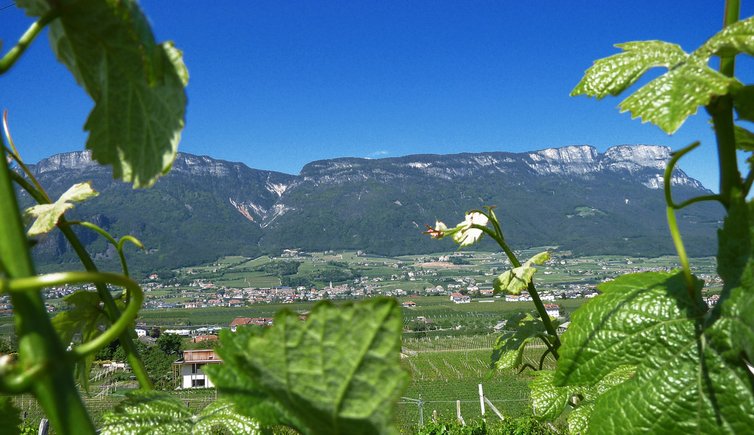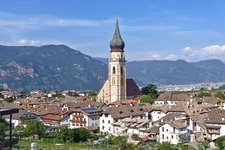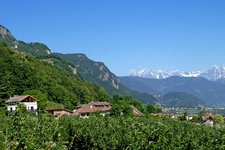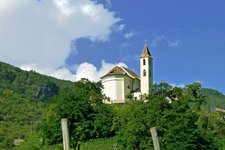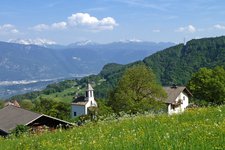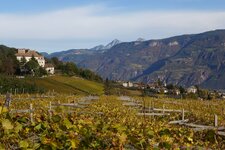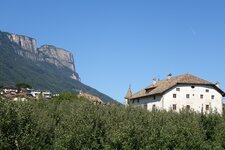Appiano, the largest wine-growing area all over South Tyrol, is characterised by castles and grapevines
Image gallery: Appiano
-
- 20/04/2025
 +9° +16° Weekly weather forecast
+9° +16° Weekly weather forecast -

Video : Appiano
-
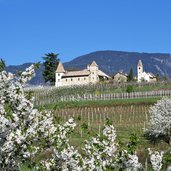
-

-
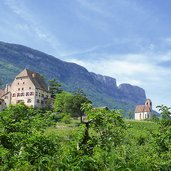
-

-
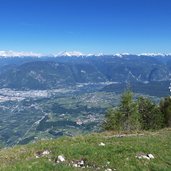
-
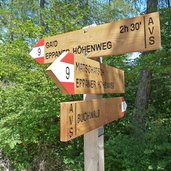
-

-

-

-

-

-

-

-
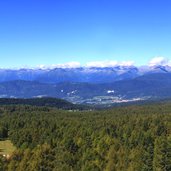
-

video : Hiking tip: Mt. Bergner Kreuz
-

video : Moos Castle in Appiano
-

video : St. Urban Distillery in Cornaiano
-

video : Appiano Castle as seen from above
-

video : Fischerhof Farm Distillery in Cornaiano
-

video : Sunset at Lake Monticolo
-

video : Wine Culture Weeks in San Paolo
-

video : Impressions from the Spring Valley
-

video : A day in Appiano
-

video : Three Castles Walk in Appiano
-

video : Walcher Estate Distillery in Appiano
-

video : Weekly market in Appiano
-

video : San Paolo Parish Church
-

video : Long Wednesday in Appiano
-

video : Touring through the apple blossom
-

video : Spring in South Tyrol
-

video : The Monticolo Forest by bike
-

video : The Spring Valley near Caldaro
-

video : Cycling through the apple blossom
-

video : Sacred Heart Fires in South Tyrol
-

video : Freudenstein Castle in Appiano
-

video : Boymont Castle near Appiano
-

video : The San Paolo Parish Church
-

video : The Monticolo Lakes as seen from above
-

video : South Tyrolean Wine Road
-

video : Sunrise on Appiano
Appiano with its surroundings is known as the "region of castles" and comprises the villages of San Michele, San Paolo, Cornaiano, Riva di Sotto, Frangarto, Missiano, Predonico and Gaido. The municipality of Appiano (200 - 1,800 m a.s.l.) counts some 14,000 inhabitants and features the ideal soils for vines and grapes - wine lovers will be delighted.
Vine-growing is the main source of income for farmers in Appiano, a fact that is also reflected by the landscape that is mainly characterised by vineyards and some fruit orchards. Appiano stretches at the slopes of the Mendola mountain ridge, partially on moraine hills of the last Ice Age. Archaeologic findings of the Bronze Age and the Middle Ages testify an early settlement of this area. It is presumed that the name of the village derives from a Roman squire named Appius. S. Paolo is one of his places of residence.
The numerous castles, mansions and residences in the municipality characterise the landscape and the single villages and attract attention.Many castles can be experienced in the frame of a walk and some can even be visited. Others are often venue for concerts and theatre performances. Another attraction are the Monticolo Lakes and the protected forest of Monticolo, considered to be recreation centres for the inhabitants of Bolzano. For hikers, there are interesting paths and destinations, such as Castel Firmiano, and the three major castles of Appiano. You are going to read more in the following articles.
